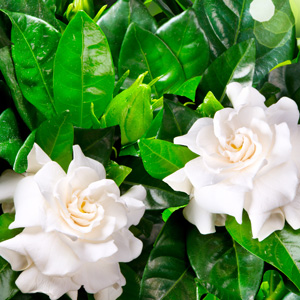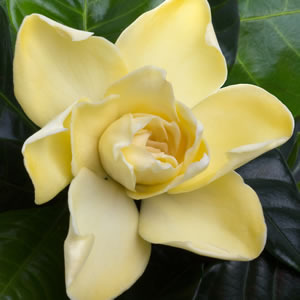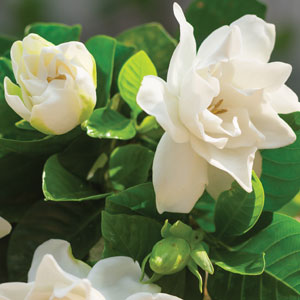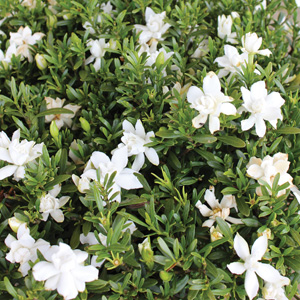Gardenia Growing Guide

What is Gardenia?
Gardenia (Gardenia spp.) is an evergreen perennial shrub. It is part of the Rubiaceae family and is native to Africa and Asia. Gardenia comes in a large variety of plants ranging from low ground covers around 30cm in height to small to large shrubs to standards. They have a variety of habits from low spreading to round and compact. They are evergreen plants with glossy, deep green foliage and there are a few variegated forms. Gardenias are best suited to warmer climates so if growing in a cooler climate make sure it has a warm sheltered position. They flower usually from late Spring or early Summer through until Autumn. Their flowers are large white or yellow rose-like blooms that are fragrant. Gardenia requires a full sun to part shade position in the garden with well draining soil that is slightly acidic. Make sure they are protected from frosts and hot afternoon sun.
Benefits of Growing Gardenia
Gardenia can be used for mass planting, informal hedge, ground cover, cottage garden or a feature plant in a pot. Their flowers are often used in weddings or as a fragrant cut flower indoors.
How to Grow Gardenia
Climatic Zones
Cool to mild tropical.
Plant Size
Sizes vary.
Gardenia O So Fine Height: 30cm, Width: 1m
Gardenia Florida Height: 1m, Width: 1m
Gardenia Gold Magic Height: 1.5m, Width: 1.5m
Gardenia Professor Pucci Height: 1-2m, Width: 1-2m
When To Plant Gardenia
Plant anytime.
Soil Preparation
They like well drained, rich soil that is slightly acidic. If your soil is of poor quality then work in some compost or well broken down manure before planting.
How To Plant Gardenia
Plant in full sun to part shade, with the plant placed at the same level it was in the pot.
Dig the planting hole twice as wide and to the same depth as the root-ball.
Gardenia Plant Care
Water well, particularly when plant is flowering and during the warmer months. Gardenias respond best to deep, regular waterings.
Mulch to retain moisture and keep roots cool during the warmer months.
Gardenias are heavy feeders. Apply a slow release fertiliser in Spring; may benefit from an annual application of Epsom Salts.
Prune shrubs after flowers have died off to remove spent flowers and trim back stray branches. Pruning is only needed to maintain shape unless being used as a hedge.
Watch for aphids, and treat with an insecticide if they appear. Yellowing Leaves are usually a sign of magnesium deficiency and can be treated with Epsom Salts.










